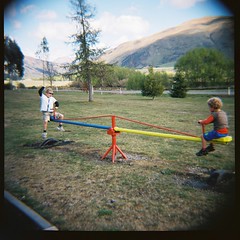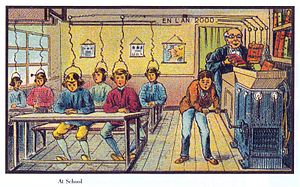How do parents define a sane and healthy level of risk when raising children? Too much caution can create an unnecessary level of fear. Not enough can lead to injury.
Whether in the car, at home, on the beach or at the playground, parents are faced with lots of opportunities to make decisions about what’s safe. How do we teach our kids to make good, safe decisions without scaring the daylights out of either us or them in the process?
Where’s the balance? It might be back at the playground, the first time you took your little one to try out the seesaw.
Your child had no idea what this piece of equipment was, what it could do or what would come next… Lifted and carefully placed on the high end of the apparatus, we held her there, mid-air, for a few seconds to feel the thrill (and maybe a little bit of fear) that goes along with being two feet tall and ‘flying’ five or six feet in the air.
She was able to manage this remarkable feat because you –her parent and protector — stood between her and the ground.
Then, it was over. She has had her introduction. It was fun. We didn’t move right into “see-sawing” ~ we quit while we were ahead.
Of course, if your children are older, you can “fast forward” to age six or seven. That same small child now rides that seesaw like a surfboard, running from one end to the other and delighting in the loud CRASH that happens some time after she crosses the center of the board.
What has changed?
Balance and coordination are better. She has more experience with gravity along with a pretty good idea of what she can get the piece of equipment to do.
We teach risk management to our kids like we teach anything else — in small doses and matched to their age, skill-level and interests. What was ‘risk’ for a toddler is ‘baby stuff’ for a third grader.
##
How do parents define success and what DO kids need to succeed? Get your electronic copy of What Kids Need to Succeed: Four Foundations of Adult Achievement for only $1.00 by clicking this link and entering the coupon code NA64P. Take your place in this important conversation.




